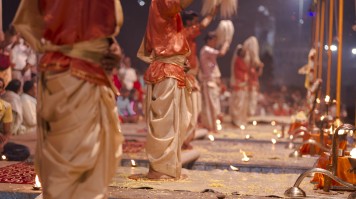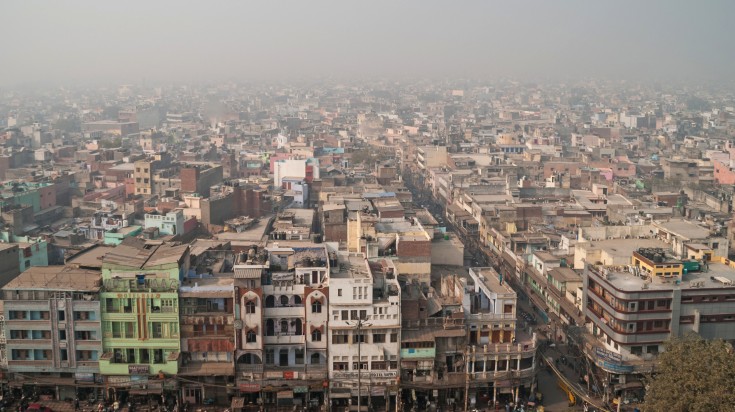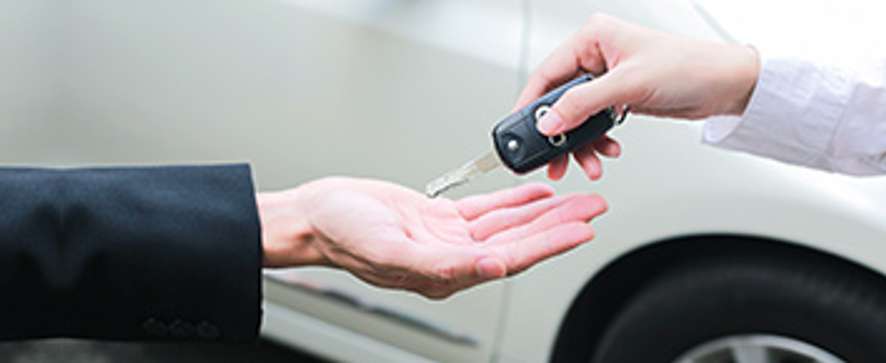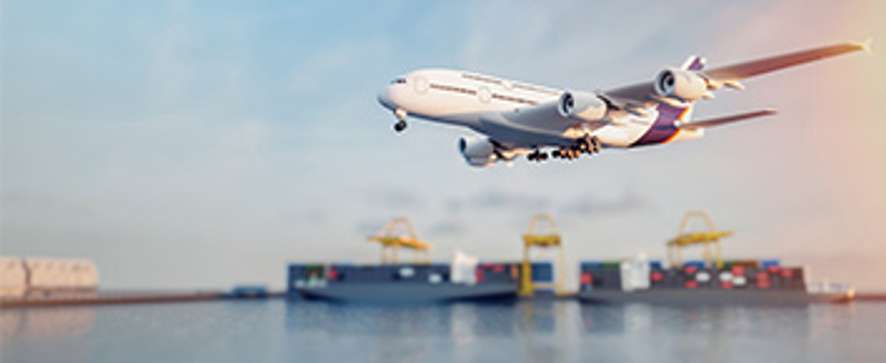Safety Tips for India Travel

- Natalia
- From Russia
- Natalia
- From Russia
- natasa
- From Belarus
- Anna
- From Belarus
How to stay safe in India
Applying common sense like in any unfamiliar country will help you stay as safe as possible during your trip to India. Here are a few specifics to bear in mind.
- Avoid demonstrations and protests
Like anywhere else, avoid large gatherings for demonstrations or protests; always follow advice in the local press.
- Take taxis at night

Taking a taxi after nightfall can be the safest option. Make sure it is a licenced cab — although even this does not always guarantee safety. For solo travelers, especially female, the best advice is to try to avoid unnecessary journeys after nightfall whenever possible. Transport facilities like Uber is available and generally considered safe.
- Scams
One of the biggest irritations in India is scams. While you may think you are used to this from traveling elsewhere, in India, scamming can be taken to a whole new level.
Fake uniforms, fake ID cards and even fake ‘government’ tourist offices (complete with the official ‘Incredible India’ slogan) are all common. One trick involves ‘helpful’ locals striking up a conversation before directing you to one of these offices where an agent will try to sell you a tour. Unscrupulous operators will happily look you in the eye while telling you outright lies about trains being fully booked, certain areas being impossible to travel to independently and so on, all in the hope of making a sale.
In general, treat unsolicited offers of help with a healthy dose of scepticism and always agree on a price before accepting any kind of service; this way, you will be able to avoid the most common tricks that tourists usually fall for.
- Safety for female travelers

In recent years, several high-profile rapes have made the international press. While there is no need to be paranoid, sexual harassment of women – from catcalls to groping to more serious assaults – is a problem in India, and female travelers should exercise caution at all times. In particular, never accept rides from strangers, avoid unnecessary journeys after nightfall and avoid traveling in unfamiliar areas alone. Solo female travelers should be especially vigilant.
- Pickpocketing and muggings
Petty theft can be a problem in India. The best advice is to keep an eye on your belongings and not to carry valuables like wallets and phones where they are easily accessible to thieves.
Muggings are less common but can occur. Avoid traveling in unfamiliar or isolated areas alone, especially at night, and don’t flaunt valuables like expensive watches.
If you are attacked, never fight back. Hand everything over and don’t resist as this may cause the situation to escalate. If you are mugged, seek help from the police immediately.
- Natural dangers
The natural disasters you are most likely to face in India are floods from heavy rainfall during the monsoon season (generally June to October) as well as cyclones and tropical storms (especially on the east coast from September to December – the Bay of Bengal is also hit from April to June).
If you are traveling during the monsoon or storm season, pay attention to weather forecasts and follow advice from local authorities. The Himalayan region is also susceptible to earthquakes, sometimes resulting in landslides and avalanche.
- Terrorism
India is considered high-risk for terrorist activity. Although some regions (for example Jammu and Kashmir) are higher risk, anywhere can be attacked, and places that attract foreign tourists have been targeted in the past.
Remain vigilant at all times, pay attention to reports in the media and avoid areas with an elevated risk of attack.
- Health and vaccinations

Meningitis, typhoid and hepatitis A vaccinations are recommended; also, make sure tetanus and polio are up to date. Rabies vaccinations are advisable; they don’t give full immunisation but give you extra time to reach a clinic for further injections if you are bitten. Since dogs, monkeys and other animals are carriers of the disease, the best policy is to avoid them.
The malaria-carrying Anopheles mosquito is endemic throughout most of India, so taking anti-malaria tablets is essential. Since tablets are not 100% effective — and mosquitos can also carry the equally nasty dengue fever — you should also take precautions to avoid being bitten. Cover your skin and apply mosquito repellent, especially in the evening when Anopheles mosquitos feed. Sleeping under mosquito nets is recommended.
Almost everyone who spends any time in India suffers from an upset stomach, but as long as you are sensible, you should be able to avoid anything more serious. Always drink bottled water (check the seal when you buy it) and don’t eat street food that has clearly been sitting around for too long.

- Others
If you travel to India, try to keep up to date with the current situation in areas where you plan to travel. Many national governments provide travel information on their websites — the UK government offers an email service, sending out updates concerning security and other issues. This is an excellent travel resource, even for non-UK citizens. Other governments provide similar services.
For more information on travel safety, refer to our article Travel Safety Tips.
What else to know before a trip to India
- Credit cards
Credit cards, particularly Visa, Mastercard and American Express, are increasingly accepted in more upmarket establishments like restaurants and hotels, but for most day-to-day purchases, you will need to rely on cash. You can change most major currencies; carrying US dollars is probably the best option. You will also be able to withdraw cash from ATMs using a debit card.
- India is huge
India is a huge country and it can be easy to misjudge distances and travel times. When planning your trip, don’t be over-ambitious with what you hope to see; if traveling overland, make sure you allow yourself plenty of time to reach your destination.
- Getting around India

The backbone of transport in India is the rail system, which is extensive and generally efficient; traveling by train is a quintessential part of any trip to India. There are several different classes, ranging from luxurious to very basic. The cheapest “unreserved” carriages can become uncomfortably overcrowded and are best avoided.
If taking an overnight service, especially in the lower-class carriages, make sure you secure your belongings and don’t leave any valuables in your bags. A chain and padlock may be helpful to attach your bag while you sleep — although a determined thief may still slash your luggage with a knife.
Sometimes, you might need to take a bus. The comfort and overall standard of buses varies, and the driving can be eccentric. On more modern buses, you can expect to be treated to loud Indian films from early in the morning until it’s time to sleep.
In cities, the go-to form of transport is the auto-rickshaw. Technically, they’re metered, but the meter is rarely used. Always establish the price before you set off — knowing roughly how far you need to travel and how much it should cost will help you haggle for a fairer price.
Larger cities, most famously Mumbai, are also served by venerable fleets of taxis. Although legally they should use the meters, again, expect to haggle over the fare before you start.
- Culture


There are plenty of opportunities for foreigners to make cultural mistakes, but on the whole, Indians are quite forgiving.
For example, you should eat with the right hand and shouldn’t touch or pass food with the left hand. However, in places frequented by tourists, most Indians won’t be offended if they see you using your left hand.
One area where you need to be careful is anything to do with religion. When visiting Hindu or Jain temples or Muslim mosques, always show proper respect, dress appropriately and always remove your shoes before entering.
In more conservative areas, it is best for couples to avoid holding hands — although in more cosmopolitan cities like Mumbai it is probably acceptable. However, shows of affection such as hugging or kissing should be avoided anywhere in India. Note that it is common to see male friends holding hands, but this is nothing more than a sign of friendship.
- Clothing
As a rule, you should dress modestly. For women, short shorts or skirts are to be avoided, as are tops that don’t cover the shoulders. The more conservative the area, the more you should cover up. For men, short shorts or sleeveless t-shirts won’t earn you much respect.
One exception might be on the beaches of Goa — although even there, female topless sunbathing or full nudity for either sex is never acceptable.
- Weather/climate
India is a huge country, and generalising about the weather is difficult. The main annual climatic event is the arrival of the monsoon, which begins in the south-west around May and progresses north and east during the following months. It normally clears up by September, although it lingers for longer in the south.
Before the rains arrive, temperatures in some places can become unbearable. This means for many places, the best time to visit is after the monsoon finishes but before the punishing heat of the summer arrives — for much of the country, this is from November to March.
- Pollution

Along with Beijing in China, Delhi now ranks among the world’s most notoriously polluted cities, and on bad days, simply going outside can be a health hazard. The elderly and those with pre-existing respiratory conditions are particularly vulnerable; those at risk should avoid any strenuous activity or even consider staying indoors when the air quality is especially bad. It is recommended to wear a quality mask or scarf when going out.
- Tipping
A culture of tipping exists in India, and giving a few rupees to waiters, porters and so on is expected and will help things run more smoothly.
Related to tipping is the concept of baksheesh. Baksheesh is derived from traditional alms-giving but is now much more akin to simply fishing for bribes. For example, somebody may ask for baksheesh to unlock a gate — a gate that has only been locked for exactly this purpose. This is an annoyance, but in general, the amounts you need to hand over are minimal.
- Electronics to bring
Feel free to take any electronics that you usually need when you travel. However, be aware that ostentatiously expensive devices will draw attention and may make you a potential target for theft. As a rule, it is better to carry as few expensive devices as possible. Indian sockets are generally the triple round pin design that is specific to the country. European plugs will work but plugs from other countries require an adaptor.
- Language
One thing that makes traveling in India easier is the fact that English is widely spoken. Indian English is quite particular and may be a little challenging for non-native speakers at first, but you will rarely find yourself in a place where nobody understands you.
- Recreational drinking and intoxication

In India, recreational drugs are illegal with the exception of bhang. Bhang is a paste made from the ground up buds and leaves of the cannabis plant that is then added to food or drinks. It is sold in official government bhang shops — it can be quite potent, so those who are not used to it should indulge in extreme moderation since the effects can last for many hours.
As for alcohol, most of India is not the best destination if you are planning a boozy holiday. Alcohol laws vary greatly from state to state; the legal drinking age ranges from 18 to 25 and in some states depend on the type of drink. Alcohol is completely forbidden in the state of Bihar and Gujarat; in places where drinking is permitted, taxes and licensing laws make alcohol more or less difficult to obtain. For example, while it is possible to drink in Rajasthan, don’t expect alcohol to be widely available. Goa, on the other hand, is the state where alcohol is easiest to come by. You will generally be able to enjoy a beer in hotels or restaurants frequented by Western tourists but don’t expect to find many Western-style bars.
Traveling to India
- Visa requirements
India has now introduced an electronic visa system. For most countries, including EU countries, USA, UK, Australia and New Zealand, applying online gives a two-month visa with two entries. The application process takes around four days. Visit https://indianvisaonline.gov.in/visa/index.html for further information. It’s possible to obtain longer visas by applying in person.
- Travel insurance
It is highly advisable to take out comprehensive travel insurance before you travel to India. Insurance should cover any adventurous activities you plan to engage in as well as repatriation should you require emergency medical care. Local hospitals are not of the same standard as in Western countries, so for any very serious illnesses or injuries, you are better off returning home for treatment.
- Airports
The main airports that foreign tourist will use include Delhi, Mumbai and Kolkata, although 28 international airports are able to process e-visas. Follow the link in the ‘visa’ section for the full list.
So, is India safe? While a trip to India is not without risk, traveling anywhere can be dangerous, and if you’re careful, there’s no reason why India should concern you more than any other country. As long as you keep your wits about you — and avoid unhygienic food — India can be one of the most rewarding and eye-opening destinations anywhere in the world.






